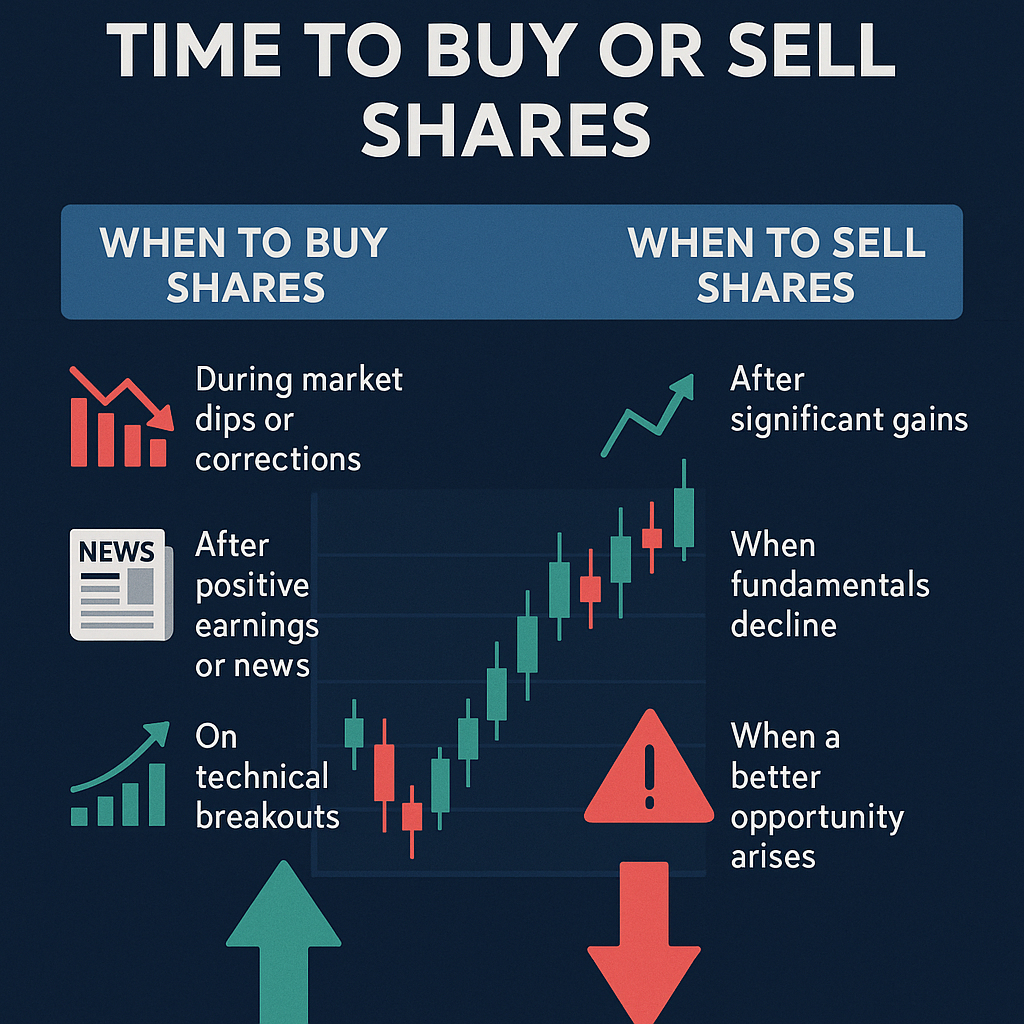Buying and selling shares isn't just about gut feeling — it's about timing, strategy, and a little patience. Whether you're a beginner investor or someone brushing up on your market game, knowing when to enter and exit the stock market can make a huge difference in your profits and losses.
Let’s break it down simply.
When to Buy Shares
- During Market Dips or Corrections
Buying when prices are down (but companies are still strong) lets you get in at a discount.
Tip: Look for stocks that are temporarily down but show strong fundamentals.
- After Positive Earnings or News
When a company beats expectations or lands a big deal, share prices often rise — but sometimes not instantly. This can be a strategic buy window before momentum builds.
- On Technical Breakouts
Traders often watch for "breakouts" — when a stock breaks through resistance levels. These moments can lead to fast upward momentum.
When to Sell Shares
- After Significant Gains
Set a profit target. If a stock has gone up 30–50% (or more), it may be wise to lock in some gains before corrections happen.
- When Fundamentals Decline
If the company’s revenue, leadership, or market position weakens, it’s time to reevaluate your position — even if you're holding at a loss.
- When a Better Opportunity Arises
If you find a stock with better potential, it might make sense to rotate your capital — especially if your current investment is stagnant.
The Golden Rule: Never Try to Time the Market Perfectly
Even the best investors don’t aim to buy at the absolute bottom or sell at the top. Instead, they make smart, informed decisions based on:
- Company fundamentals
- Market trends
- Personal financial goals
Final Thought
The right time to buy or sell shares is when you’ve done your research, set clear goals, and acted with discipline — not emotion.
Stay calm, stay informed, and your investments will thank you.




